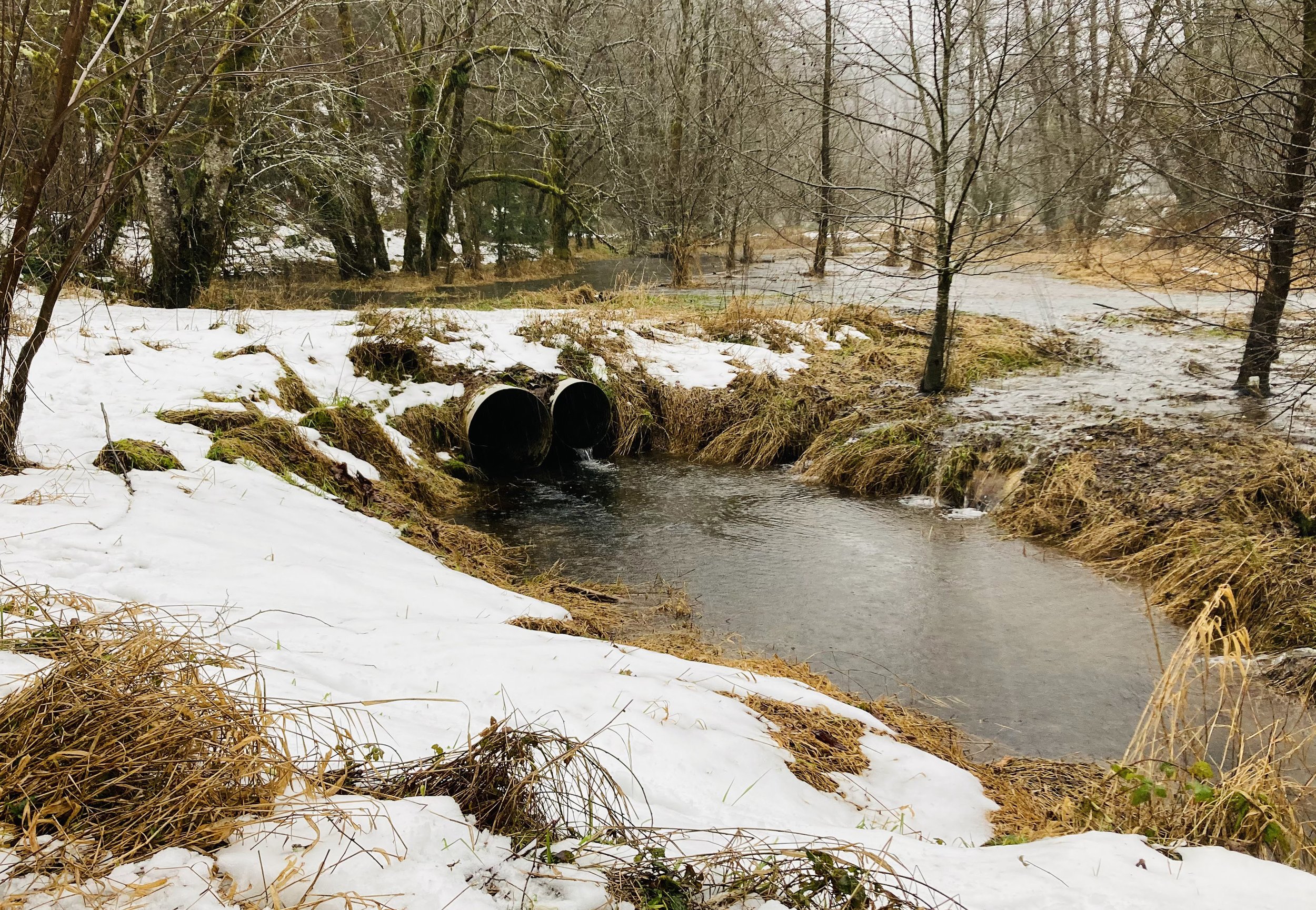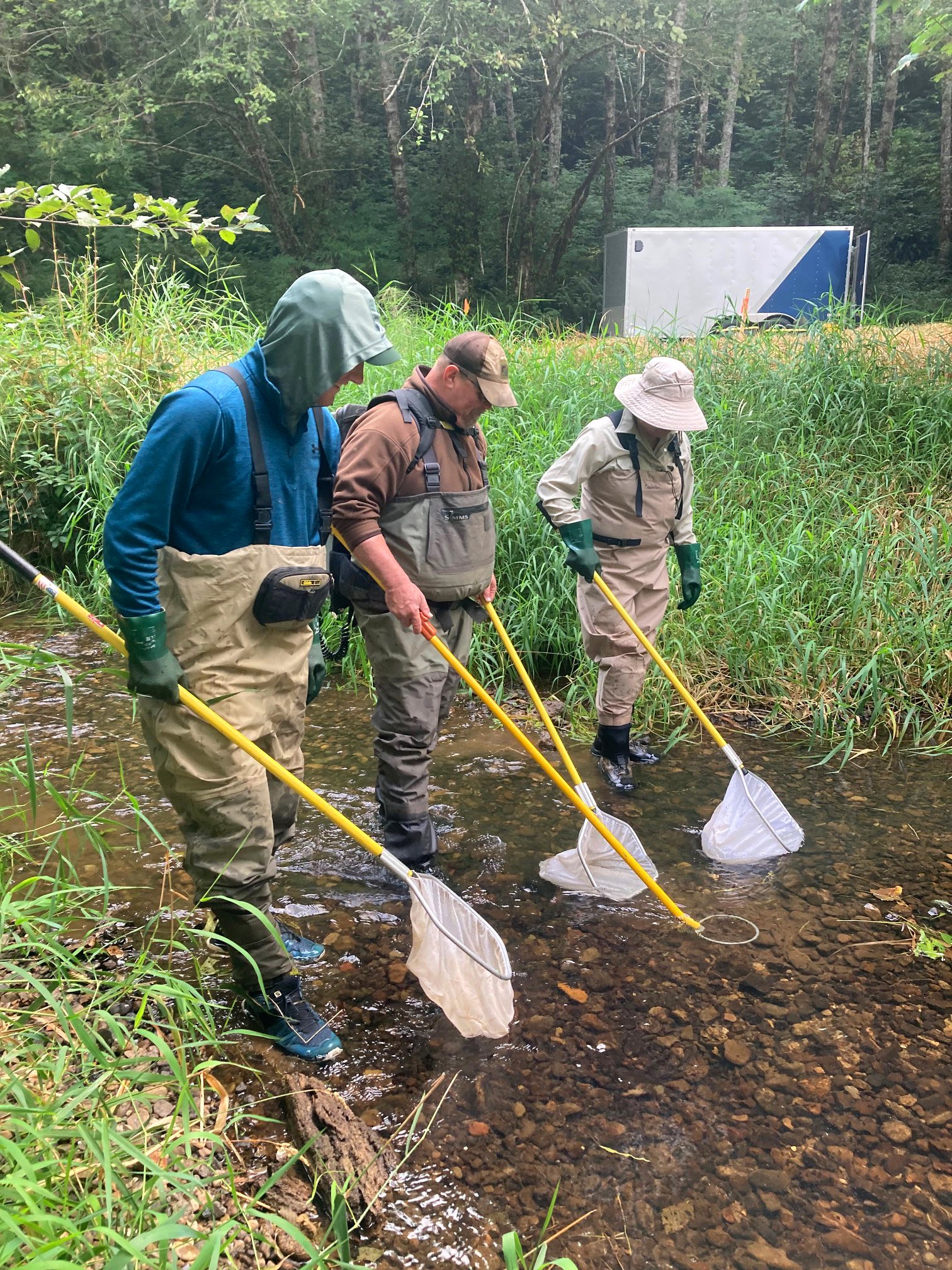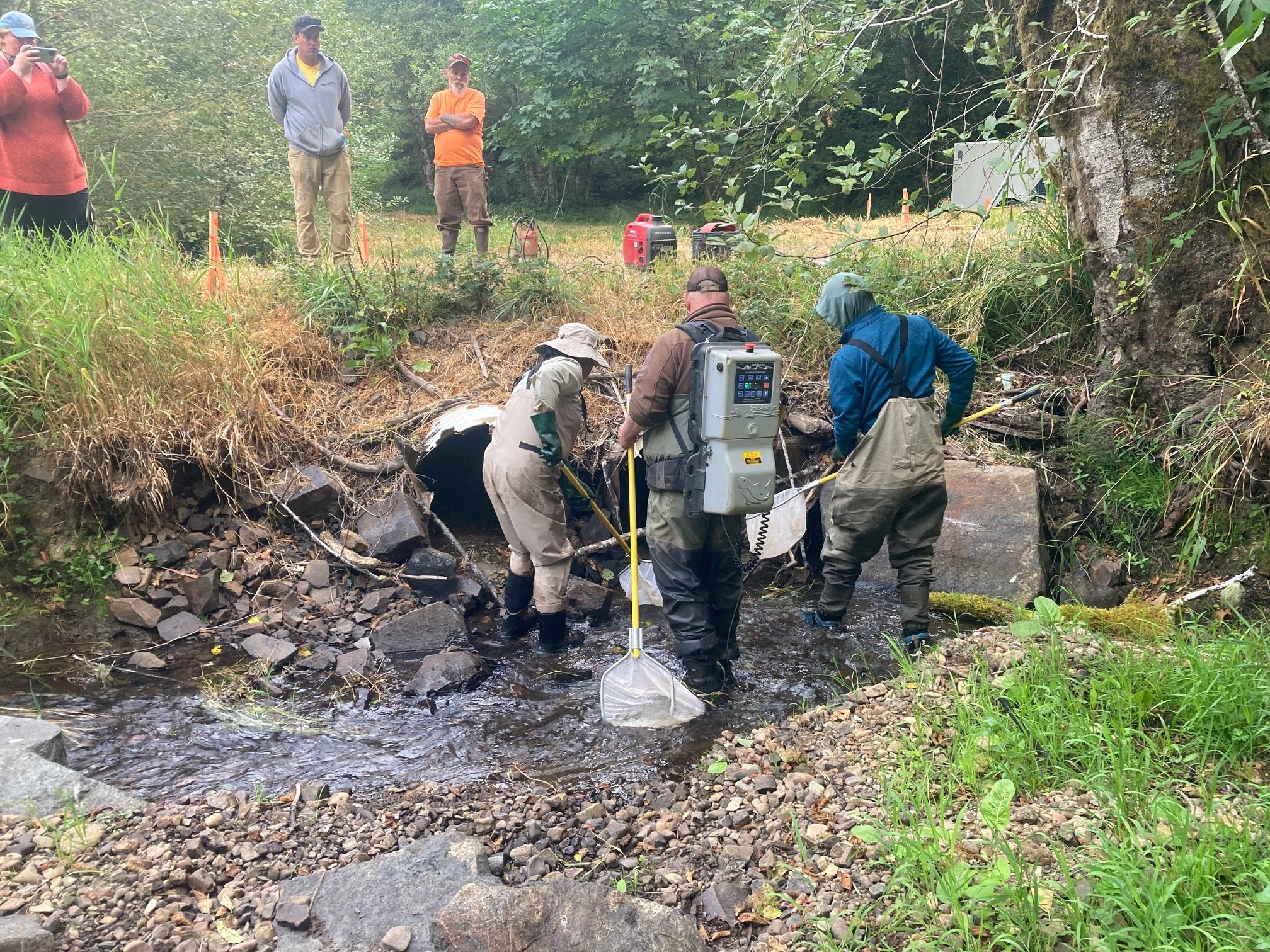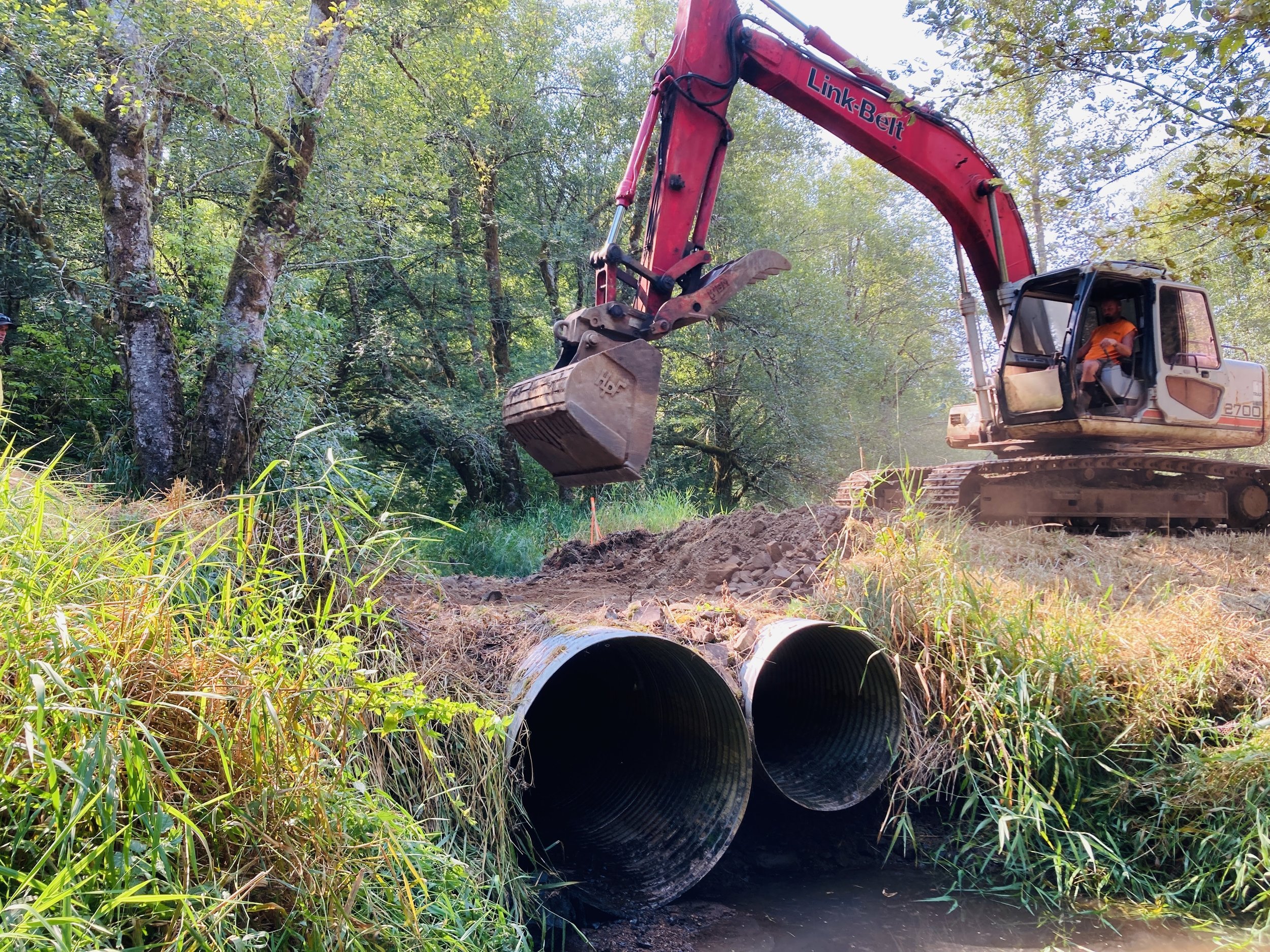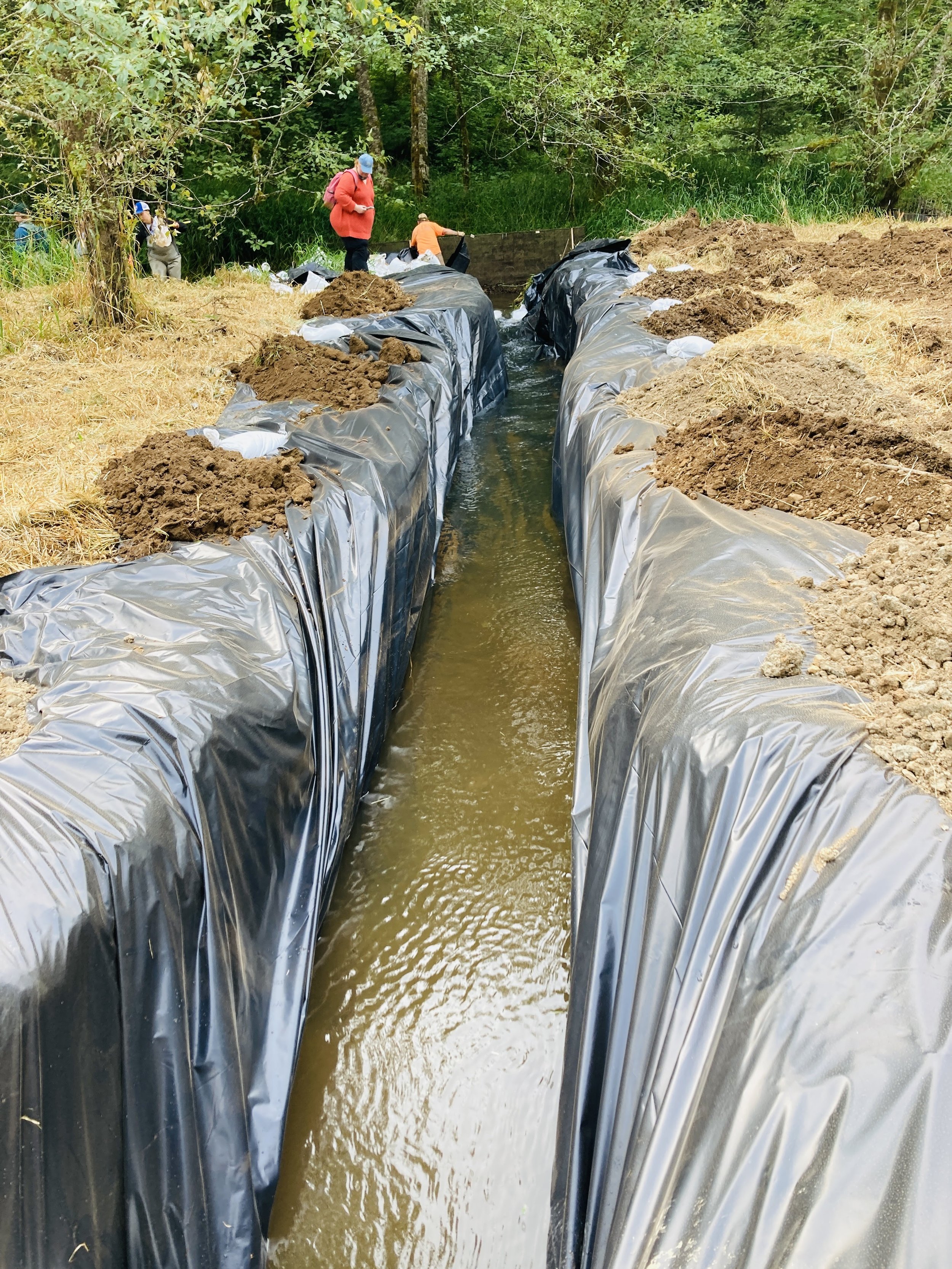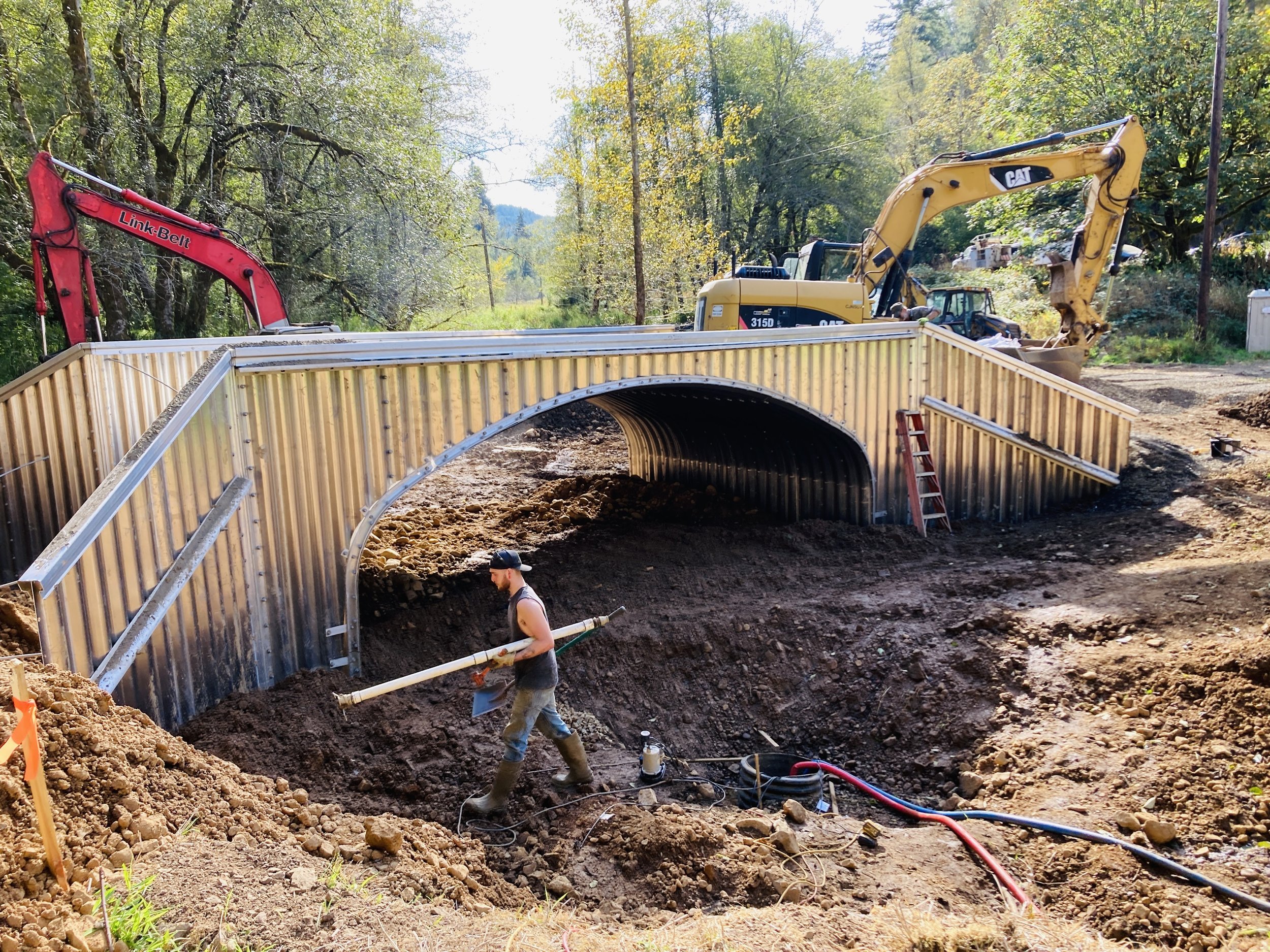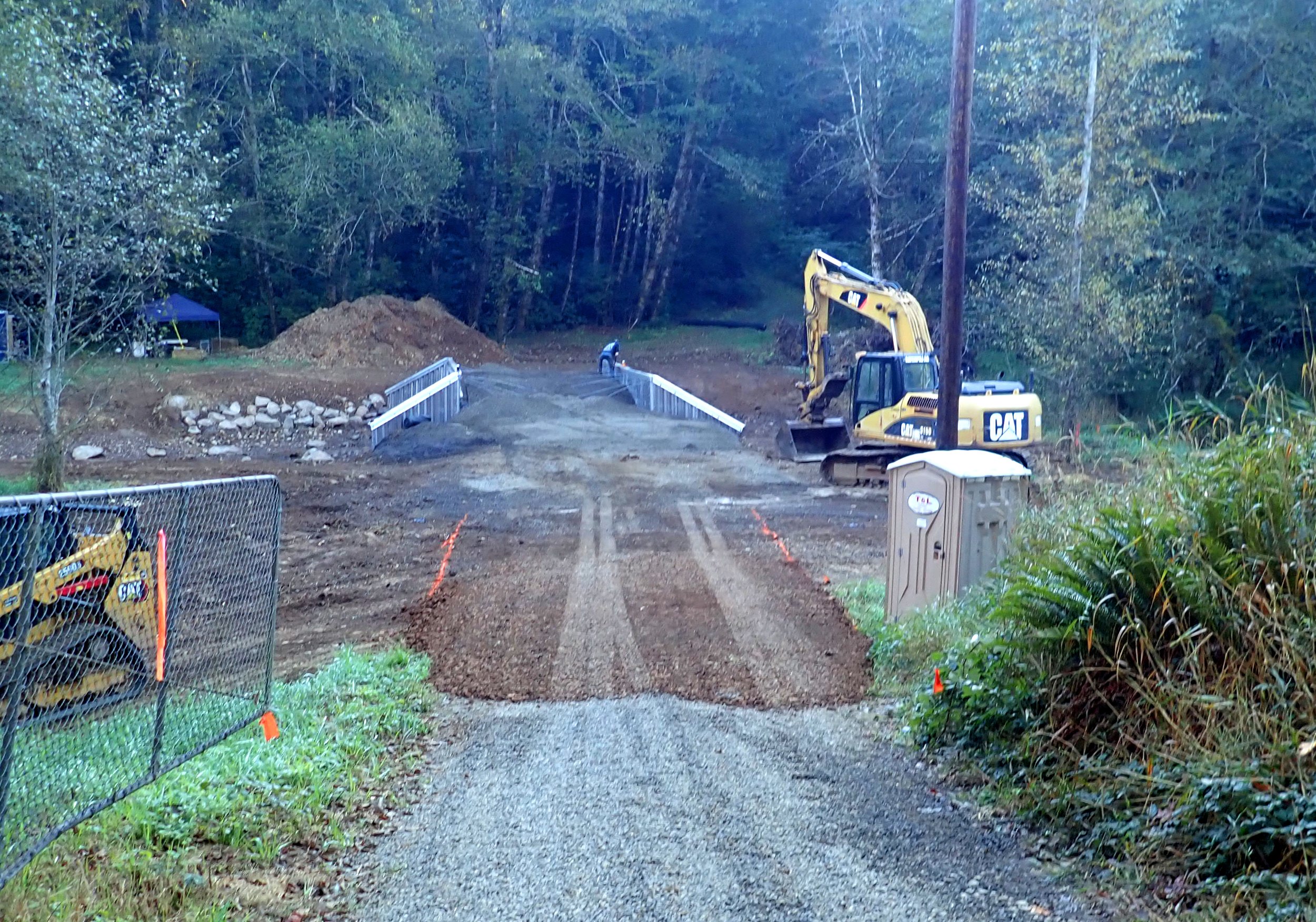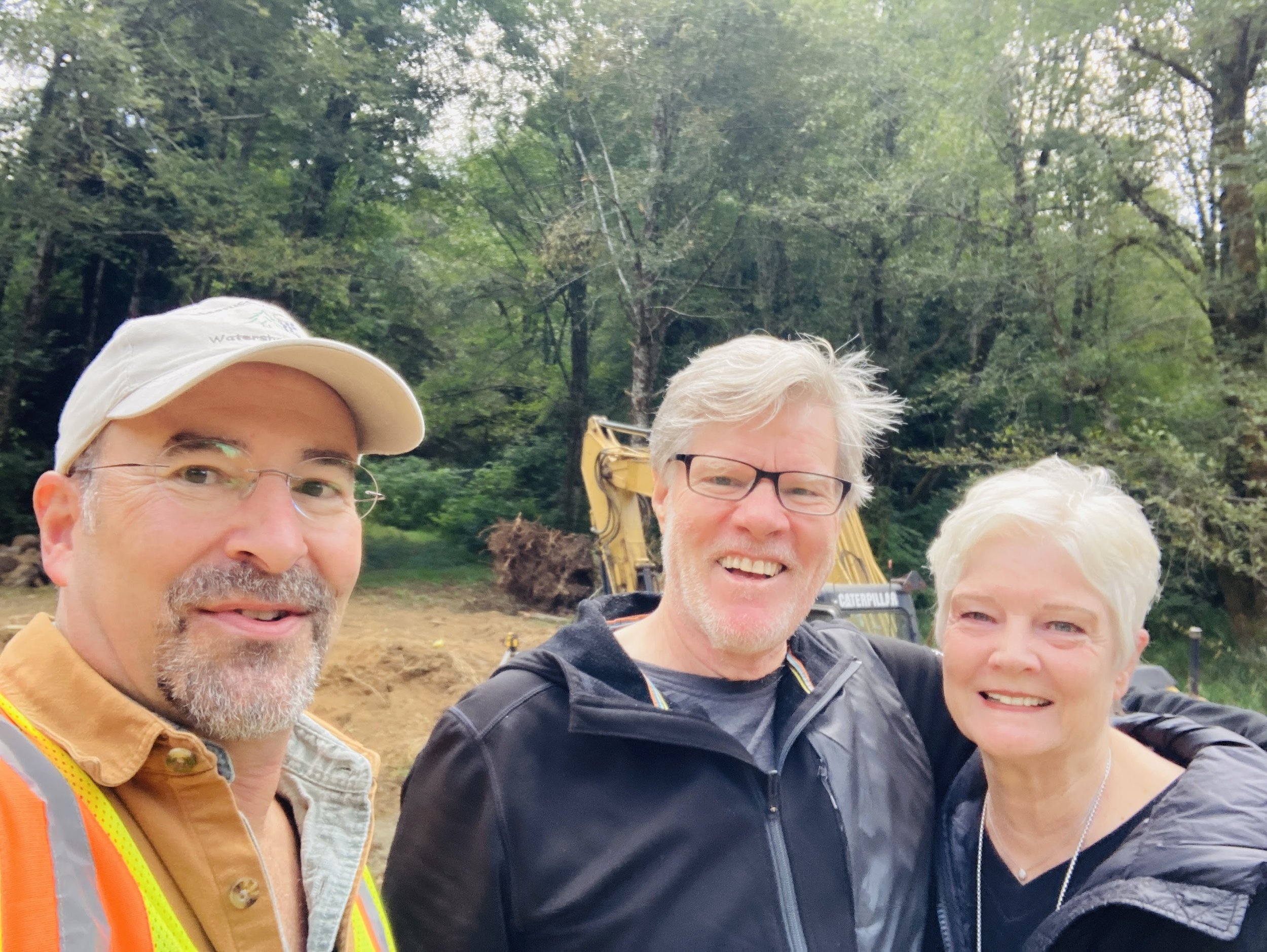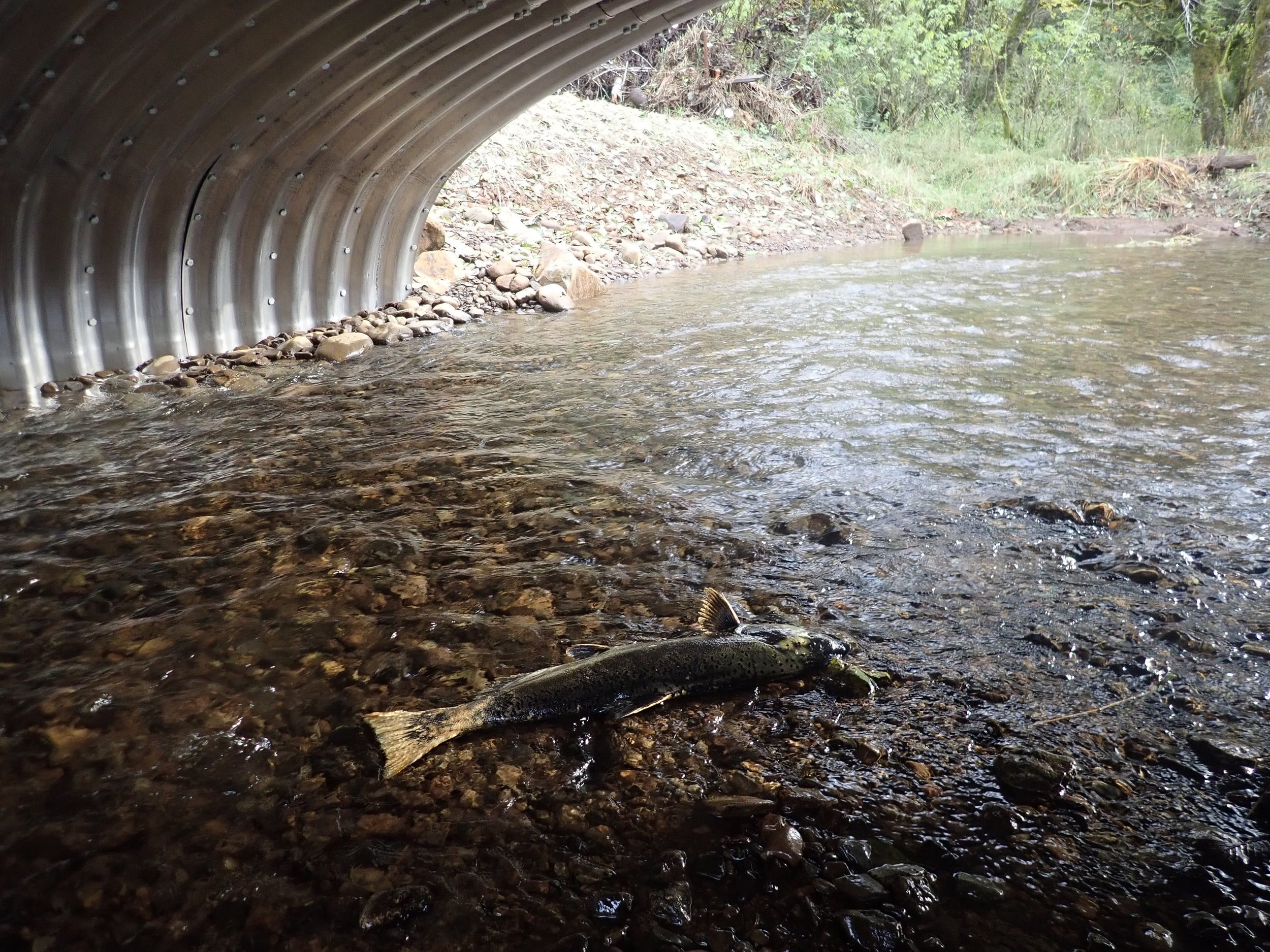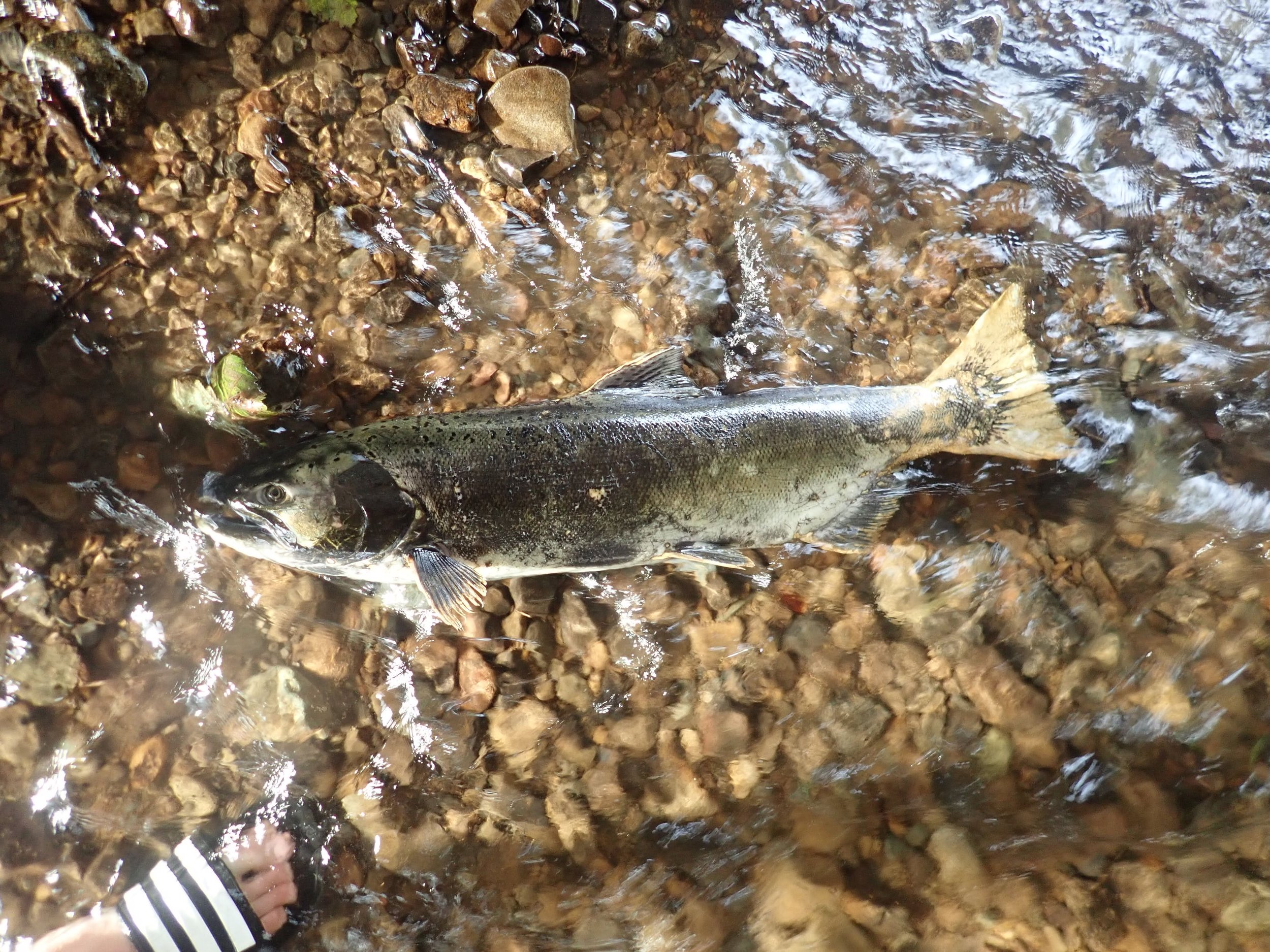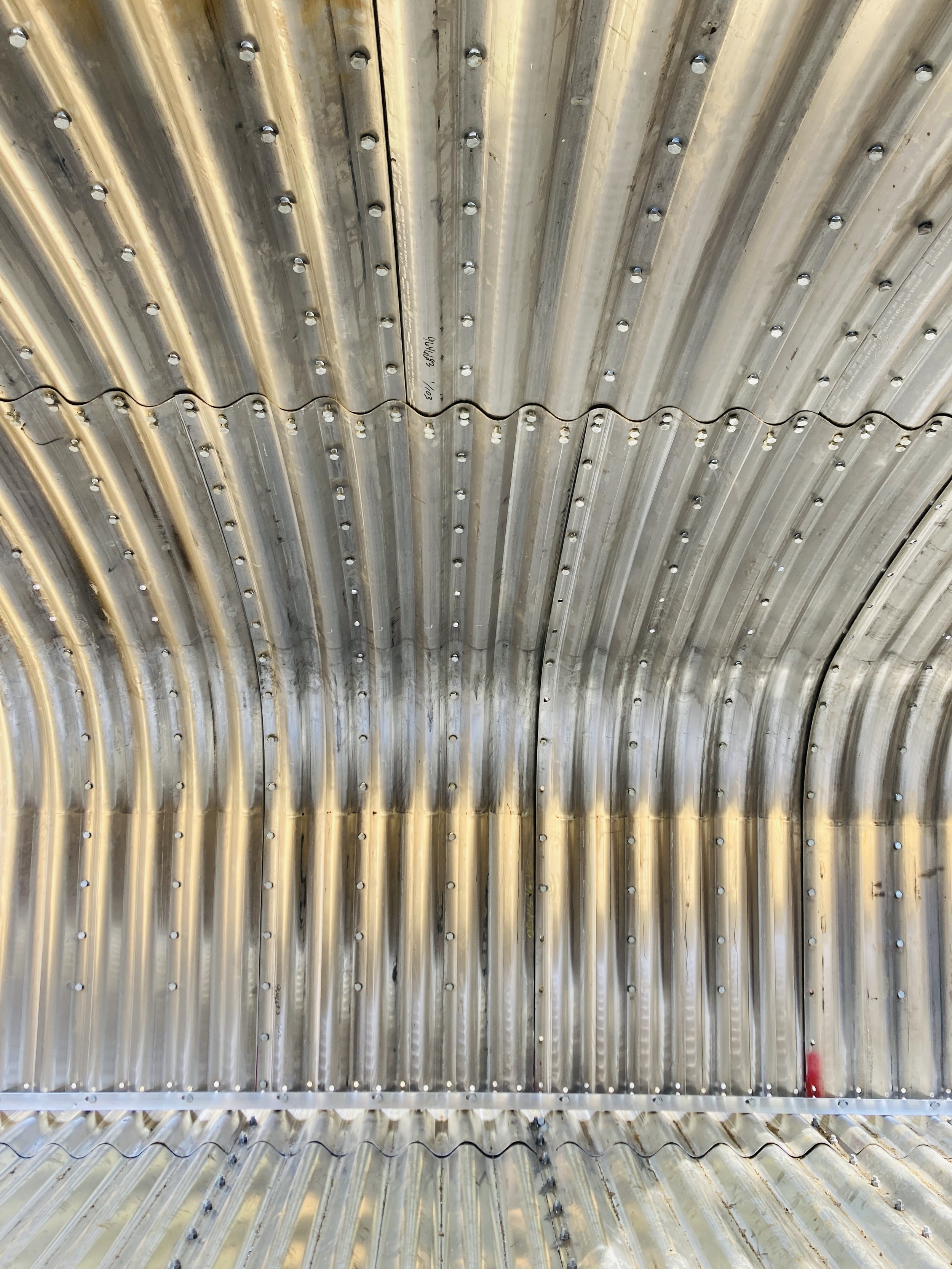Alder Creek highlights
The completed bridge over Alder Creek.
“The project property was
purchased by the Moersch family for the purpose of protecting its important aquatic and riparian habitats. They’re so happy to have been able to help with improving fish passage in this reach and the rest of the watershed above.
”
Project oVerview
Started: 1/21 Completed: 10/22
Alder Creek drains a 7.05 square mile (4,512 acre) watershed and is a tributary to Three Rivers, an important tributary of the Nestucca River. From its headwaters on the Siuslaw National Forest land, Alder Creek flows through private timber land and privately owned pastures. The project's two culverts were a significant fish passage barrier and their replacement with a much larger aluminum box culvert restored access to approximately 1 mile of coho habitat, and 2 miles of total salmonid habitat. Additionally, aquatic organism passage restored access to 14 acres of beaver influenced wetland habitat including ponds, side channels and alcoves suitable for juvenile rearing.
Completed Solution
The barrier two culverts were replaced with an aluminum box culvert, sized to accommodate 1.5 times the active channel width.
Highly successful Partnership
The Alder Creek project was successfully implemented with the collaboration of Salmon SuperHwy partners. Federal and state agencies, local non-profits, and a willing private landowner combined technical skills and funding to remove an in-stream barrier and reconnect high quality spawning and rearing habitat.
The USDA Natural Resource Conservation Service and Nestucca Neskowin Sand Lake Watersheds Council (NNSLWC) led the project. The US Forest Service provided surveys, permitting assistance and oversaw project implementation. The US Fish and Wildlife Service provided technical assistance, design review and cash contribution. NNSLWC provided project management, state & local permitting and contracting. The Oregon Department of Fish & Wildlife provided technical assistance in project implementation.
Benefits
Restores access to 2 miles of anadromous fish habitat, including 14 acres of quality juvenile rearing habitat.
Improves sediment and large wood transport
Resilient infrastructure
Partners
Nestucca, Neskowin, & Sand Lake Watersheds Council, USDA Natural Resource Conservation Service, US Fish and Wildlife Service, USDA Forest Service, Cascade Pacific Resource Conservation and Development, Oregon Department of Fish and Wildlife
cost + funding
TOTAL PROJECT COST: $327,349
NRCS: $196,849 plus $70,000 in kind
USFWS: $10,000
Cascade PRCD: $41,000
USFS: $8,000 in kind
ODFW: $1,500 in kind
